Last updated on February 19, 2024
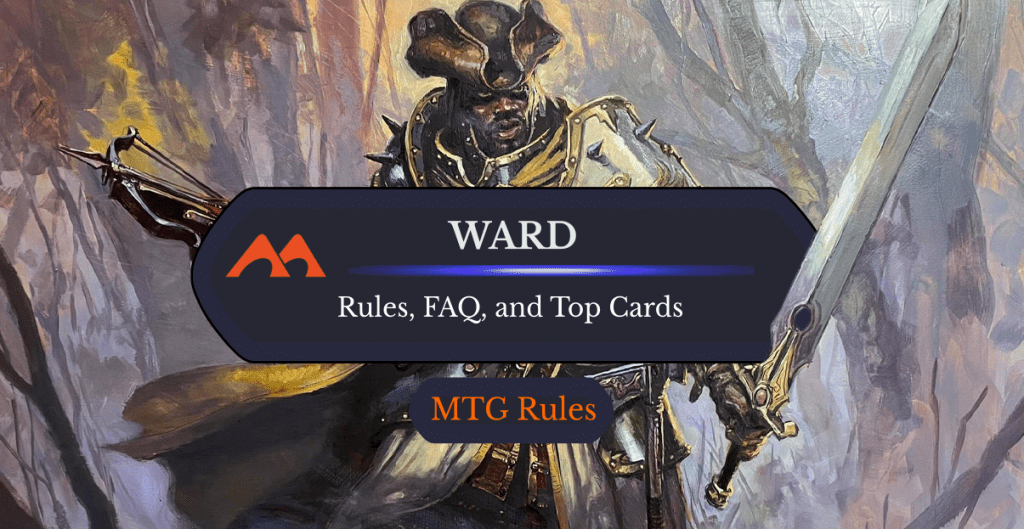
Brutal Cathar | Illustration by Karl Kopinski
Ward is one of Magic’s newest mechanics, evergreen from the moment it hit a card.
How does it work? Why do all the boomers you play with like it more than hexproof? What is Kappa Cannoneer and why is it showing up in Legacy and Vintage decks?
Let’s find out!
How Does Ward Work?
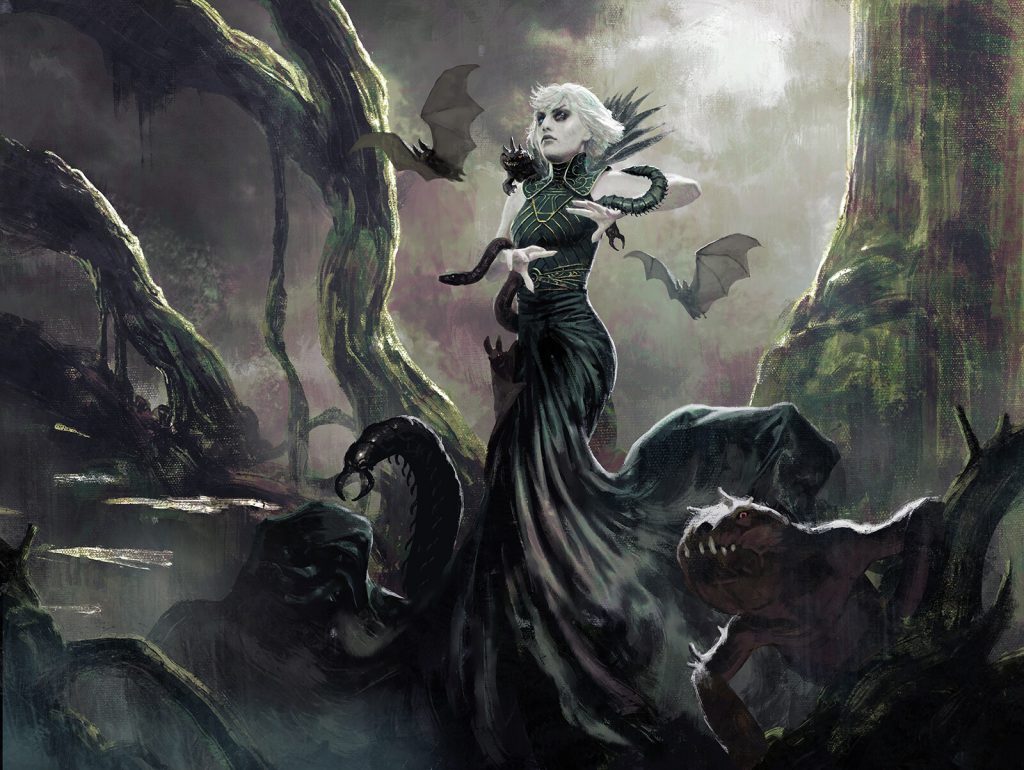
Sedgemoor Witch | Illustration by Igor Kieryluk
Ward is a keyword that counters a targeted spell or ability from an opponent it unless the ward cost is paid. That can be paying life, discarding a card, or (most commonly) paying a mana cost. The latter is usually 2 but ranges from 1 all the way to 10.
The History of Ward in MTG
Ward appeared in Strixhaven in 2021 on four cards: Owlin Shieldmage, Torrent Sculptor, Waterfall Aerialist, and, most significantly, Sedgemoor Witch. It’s now an evergreen mechanic that has appeared on a few cards in each set, including their associated Commander precons.
What is “Ward X”?
The X in “Ward X” is the cost that has to be paid to prevent the spell you’re casting from being countered. You can cast the spell without being able to pay this cost, but it’ll fizzle. Although paying mana is the most common and is the typical cost, there have been a number of innovations.
First there was the ward cost of paying three life, introduced on Owlin Shieldmage and Sedgemoor Witch.
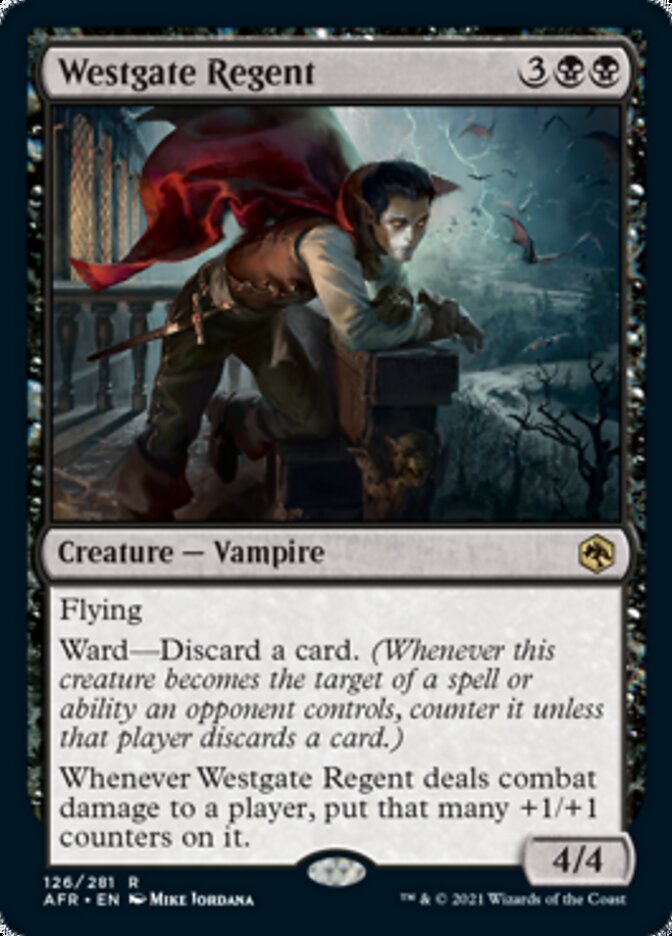
Then there was a discard tax for Westgate Regent in Forgotten Realms.
The conditional ward for The Tarrasque and Iymrith, Desert Doom.
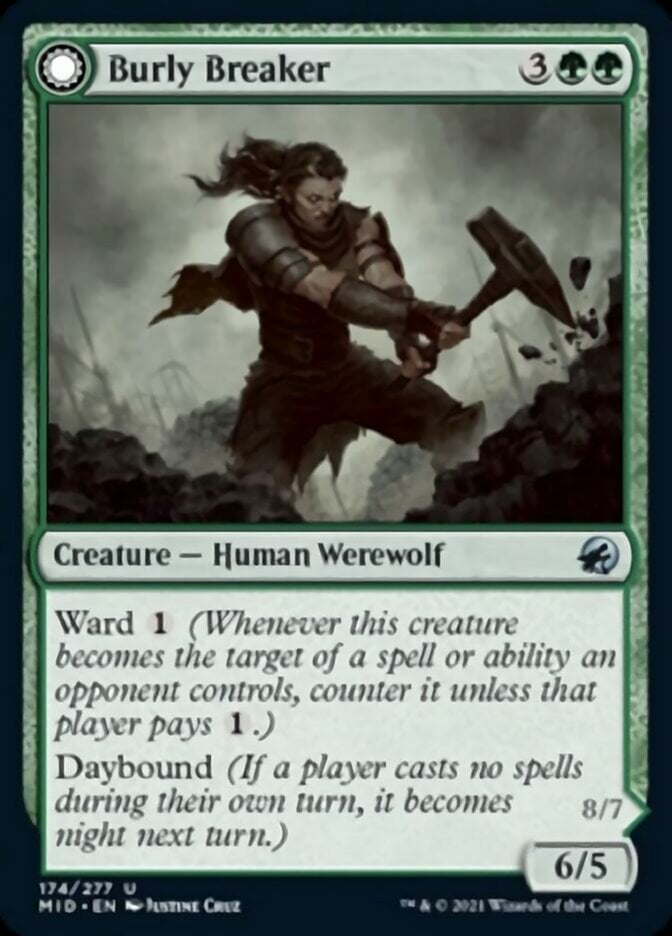
There was also the variable ward costs for flip cards like Burly Breaker in Midnight Hunt.
Is “Ward – Sacrifice a creature” or “Ward – Mill 3 cards” that far off?
Who Pays the Ward Cost?
The caster of the spell that targets a permanent with ward has to pay the cost if they want the spell to resolve.
Do You Have to Pay for Ward?
You don’t have to pay the ward cost. But why wouldn’t you?
Well, if you cast something targeting a warded creature and then don't pay the tax, it means a casting trigger happened and your spell ends up in the graveyard. These are two things you might want if you have an attacking Festival Crasher for the former and an escape or delve card you want to cast for the latter.
This is also important because your situation might change and your interest in and ability to pay the ward cost might shift after casting.
Does Ward Use the Stack?
Yes, ward uses the stack. That’s what makes it so interesting and why it seems to be largely replacing similar mechanics in this design space.
Let’s say I cast Bloodchief's Thirst on your Sedgemoor Witch while I have only four life. The ward cost trigger lands on the stack. You can then lob Play with Fire at my face, which means I either don’t to pay the ward cost or I die.
A more common interaction is something like this: Let’s say I cast the Bloodchief's Thirst at your Armguard Familiar with exactly three mana open and a Disruption Protocol in my hand. You can respond to that by casting Infernal Grasp at one of my creatures. I was all set to pay the ward cost, but now I have to choose. I can counter your kill spell, but that taps out the mana I need for the ward tax, which means your Familiar survives. Or, if I really have it out for that Familiar, I can pay the ward tax and let your Grasp resolve.
Maybe I just like blue decks too much, but that sounds like fun to me.
Ward vs. Hexproof vs. Shroud
It all started with shroud, an oppressive effect that prevents a card from being the target of spells or abilities by anyone, including the permanent’s controller. The idea showed up all the way back in Legends and gave us a shroud-creating enchantment, Spectral Cloak. Fallen Empires gave us creatures with a shroud ability that could be activated with mana, and that was followed by Autumn Willow, a Homelands chase card (I know, that sounds funny to me too) with a static shroud ability pre-keyworded as “cannot be the target of spells of effects.”
Magic replaced this with the slightly less stultifying hexproof, which is still just as obnoxious when you’re sitting across the table from it. Avabruck Caretaker, anyone? Maybe even more so since its controller can buff the hexproof creature while you impotently glare at it (and them).
Although both of these effects are commonly seen in Commander, especially with cards like Lightning Greaves and Mask of Avacyn, there’s something definitely feel-bad about facing down cards with these keywords. Players tend to roundly hate game elements or board states that give them no counterplay. Packing board wipes or sacrifice Edicts or Arcane Lighthouse into Commander decks that otherwise wouldn’t want them just to be able to deal with Inkwell Leviathan is also not exactly what I would define as “fun.”
Ward opens up the possibility for more counterplay, even if the ward cost of 10 on The Tarrasque is basically insurmountable in most cases.

Dumb and Dumber
But even while the march of shroud and hexproof laid their waste across boomer Magic landscapes, something was afoot. Although ward as a keyword wouldn’t appear until 20 years later, the first experiment with this kind of effect was all the way back in Mirage.
Taxing effects were with Magic from the beginning, usually in the color hoser cards like Gloom. But an idea in Alpha’s suite of less-good alternatives to Counterspell was taxing as an element of counterspells with Power Sink, something that lives on in Mana Leak variants to this day. But Kaervek's Torch was the first spell to pack what would become the formula for the unnamed, let’s call it “proto-ward,” mechanic for years to follow: “spells that target it cost 2 more to cast.”
This effect was introduced on a permanent in Planechase 2012 with Elderwood Scion, and the costing-two-more-to-cast formula generally appeared on one card per set (with plenty of exceptions) starting with Dragons of Tarkir’s Icefall Regent. A few hits you might recognize here are Ixalan’s Kopala, Warden of Waves, Ravnica Allegiance’s Sphinx of New Prahv, Core Set 2020’s Boreal Elemental, Ikoria‘s Jubilant Skybonder, and Throne of Eldraine’s Syr Elenora, the Discerning.
Theros: Beyond Death’s Callaphe, Beloved of the Sea shifted the cost to , and Core Set 2021’s Pursued Whale swole it up to . These taxes can also be paid in different ways, from life for a target with Ashenmoor Liege or damage with Bonecrusher Giant to gifting life to your opponent with Shield Mare.
Although this effect continues up to the newest set, Kamigawa: Neon Dynasty, with the new hotness Hinata, Dawn-Crowned (a great commander by the way), a different approach to this design space was needed to get to ward’s final form.
A more precise callback to Power Sink, “frost armor” is a pre-keyworded ward named after its first card appearance on Frost Titan. While proto ward increases the cost of a spell, this frost armor/ward counters the spell unless the cost is paid. Cards that just hard counter a spell that targets the creature, like Kira, Great Glass-Spinner, definitely exist but they’re much less common.
Ward creates an interesting set of stack interactions that allow for some really interesting gameplay moments. Given that shroud and hexproof put a damper on player interactions, frost armor/ward works better than proto ward as an alternative because it increases options and possible gameplay states.
Did Ward Replace Hexproof?
Not exactly, but it partially has. After everything I’ve gone over so far you’d think that ward replaced hexproof, right? But then we had Avabruck Caretaker making opponents scoop left and right in Crimson Vow drafts.
Aside from that egregious example it looks like hexproof is moving almost entirely to conditional or temporary effects. Think Snakeskin Veil. A good example is Walking Skyscraper in Neon Dynasty. Like Paradise Druid, its hexproof evaporates when it’s tapped. Or there’s Sungold Sentinel from Midnight Hunt. It’s got a hard-to-achieve activated ability to gain a really limited version of hexproof for one turn.
WotC suggests that “big creatures that are hard to interact with are positive additions to their environments.” They might have been thinking of the Caretaker when they said that, but I’m not sure anyone would agree in the case of that card.
What if a Spell or Ability that Can’t Be Countered Targets a Ward Creature?
The ward ability doesn’t apply to spells or abilities that can’t be countered. So nothing happens and no ward cost has to be paid.
That's right – you get to just ignore ward.
Does Ward Work Against Planeswalker Abilities?
Ward does work against planeswalker abilities. Just like with shroud and hexproof, anything that targets the permanent with ward has to pay the tax or it’s countered.
Does Ward Stop Deathtouch?
No. Ward only taxes/counters targeted spells or abilities, but deathtouch doesn’t target anything. It’s a static ability of the creature with deathtouch, so it doesn't do anything.
Best Ward Cards
Although a lot of the cards are on this list because they’d be powerful even without their ward costs, many of them make the most interesting use of ward as a mechanic in case you just wanted to browse what’s possible.
#34. Mirrorshell Crab

Stifle effects only get more important. Mirrorshell Crab isn’t a super-efficient one, but in a counter war, this can only be countered by other Stifles if they lack the mana, so that’s pretty good. As turns go on and everyone can play the three this gets worse, but there are decks where this is a must include.
#33. Colossal Skyturtle

This is kind of like a turtle power charm, it’s so flexible. There’s a lot of competition in Simic decks, which might crowd out Colossal Skyturtle, but as new sets come out and I update decks, I find myself gravitating toward cards I always have a use for. This is one of those.
#32. Ancient Imperiosaur + Hierophant Bio-Titan
Two big, dumb, cost-cutting brutes we all sorta wish had more protection than ward 2 given the investment. But in the kind of green deck that leans on Tamiyo's Safekeeping effects, Ancient Imperiosaur and Hierophant Bio-Titan are super fun.
#31. Combat Research

You know who you are. You either need another Curiosity variant and will snap up Combat Research like candy or you will shrug and move along. #tempo.
#30. Cultist of the Absolute
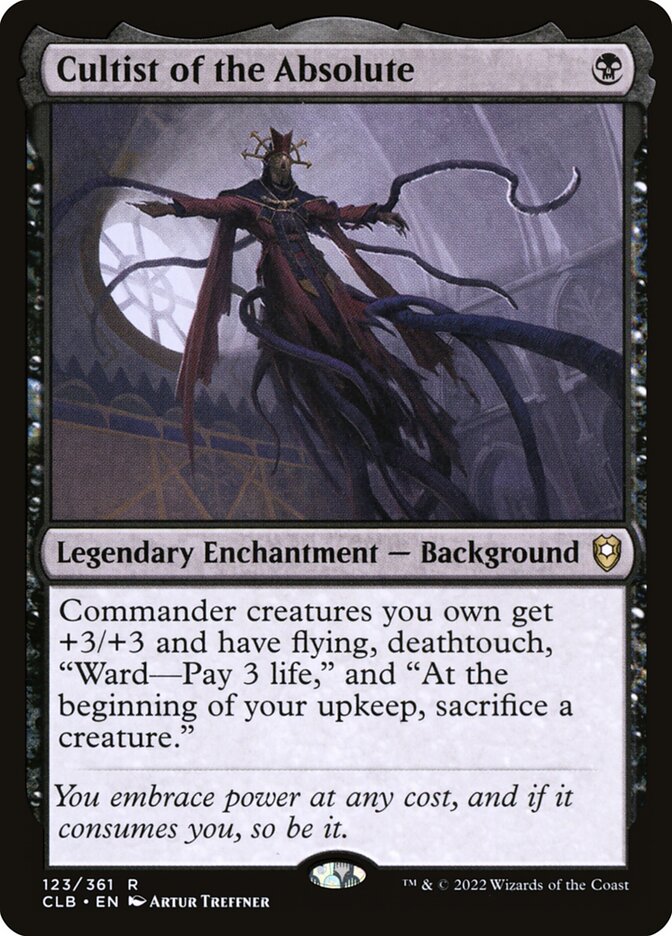
Cultist of the Absolute seems better than it is, but it’s good value for its cost.
#29. Team Ward Cards
These are really different cards, but it’s worth discussing this effect in one place. How valuable is warding the whole team in a world of board wipe profusion? It’s probably most impactful for 1) tribes where opponents want to use targeted removal while holding back sweepers, or 2) faster tribes that solicit quick defensive interactions.
As a result, these four probably rank Rith, Liberated Primeval, Coppercoat Vanguard, Gold-Forged Thopteryx, and then Radagast, Wizard of Wilds.
#28. Nine-Fingers Keene
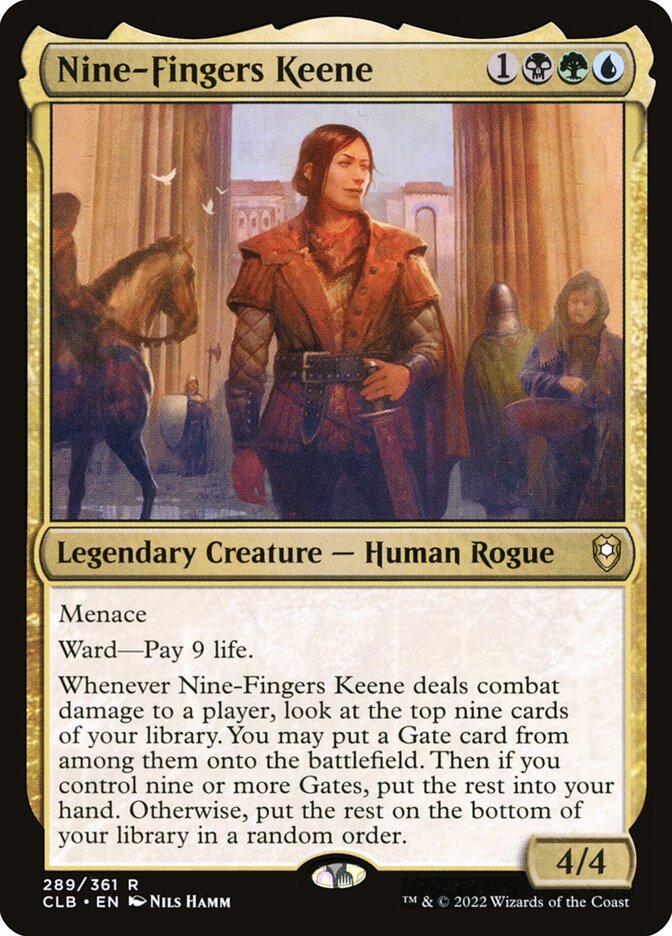
Gates players rejoiced at a gate commander and then immediately bemoaned that Nine-Fingers Keene was only three colors. With only 12 gates that can be in this deck, does it work? Sometimes. That ward cost is smoking, though.
#27. Mishra, Tamer of Mak Fawa

A powerful ward text mixed with mass unearth makes Mishra, Tamer of Mak Fawa a very good buildaround.
#26. Wondrous Crucible
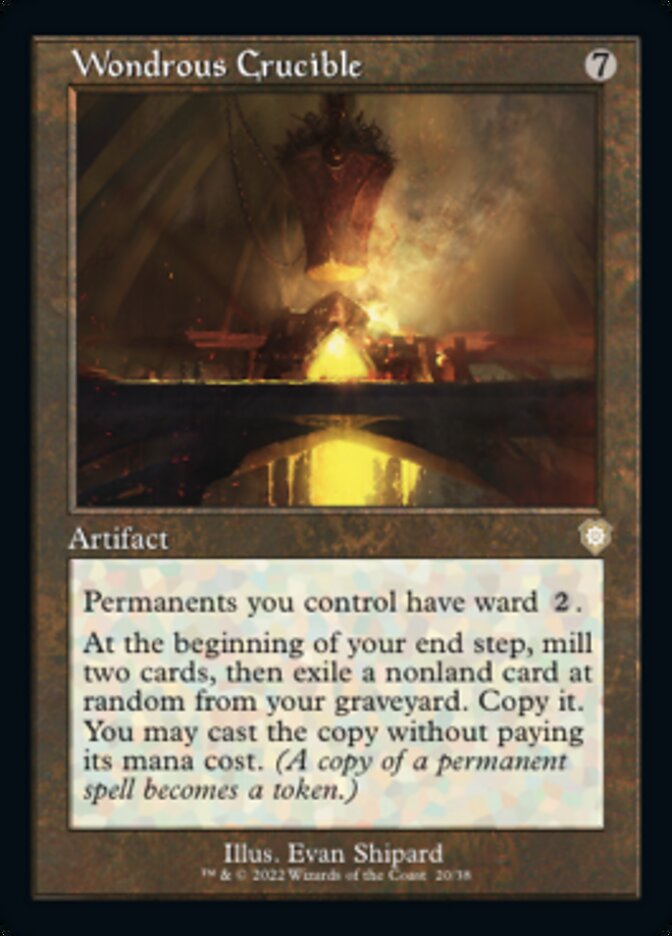
Wondrous Crucible does work in Mishra, Eminent One decks.
#25. Leyline Immersion
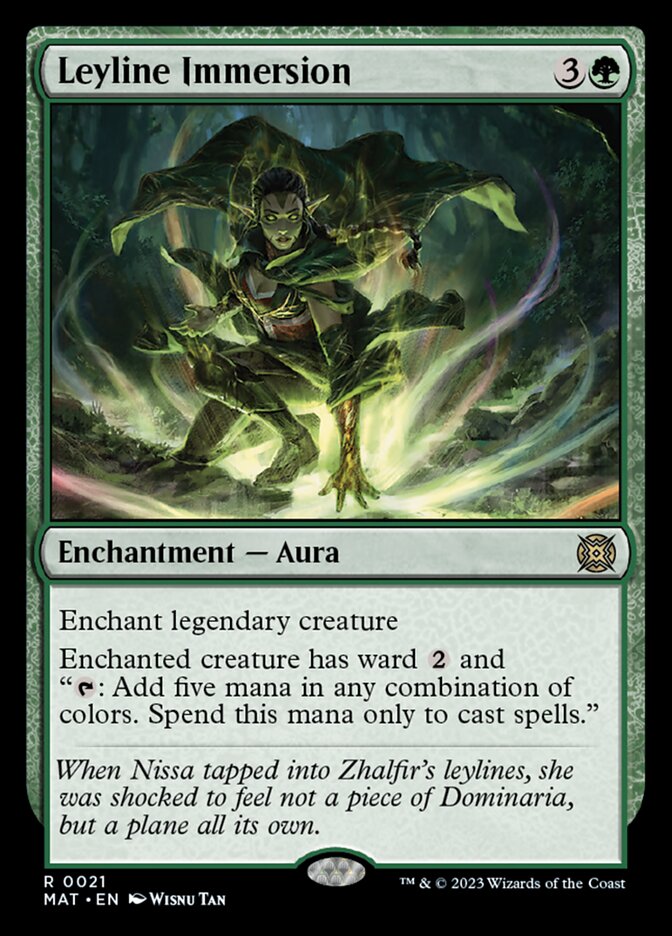
This seems impossible to play in a normal deck, but if you can drop this onto like a Ragavan, Nimble Pilferer on turn three, that’s a lot of ramp. But Leyline Immersion is for broken nonsense.
There are limits. It doesn’t give infinite mana on a card like Fain, the Broker because the mana can only be used for spells. But things like Leyline of Singularity make Pili-Pala legendary, so winter is coming.
#24. Storm of Saruman

How good is a less powerful Thousand-Year Storm in monoblue? I think better than we’re imagining, in EDH at least. Blue can cantrip its way to enabling Storm of Saruman on each opponents’ turn.
The limits are that this is a magecraft trigger, and most of what you want to work with these kinds of cards doesn't trigger off copied spells.
#23. Graveyard Trespasser / Graveyard Glutton
Graveyard Trespasser has stymied graveyard strategies in Standard since it was printed, although the gluttony of Graveyard Glutton is a bit less good in EDH. And that ward cost, so punishing in conjunction with its abilities, is also easier to manage in Commander.
#22. Saruman of Many Colors

We’re gonna have to see this in action to really get a sense of how it’s going to work, but Saruman of Many Colors yoinks enchantments out of opponents’ graveyards, which is easy to gloss over when reading the more common text about instants and sorceries.
It’s hard to evaluate how strong that is because we haven’t really seen a lot of that, and I don’t usually see Omniscience in graveyards. Wicked ward cost, though, with a nice bit of synergy.
#21. Svyelun of Sea and Sky
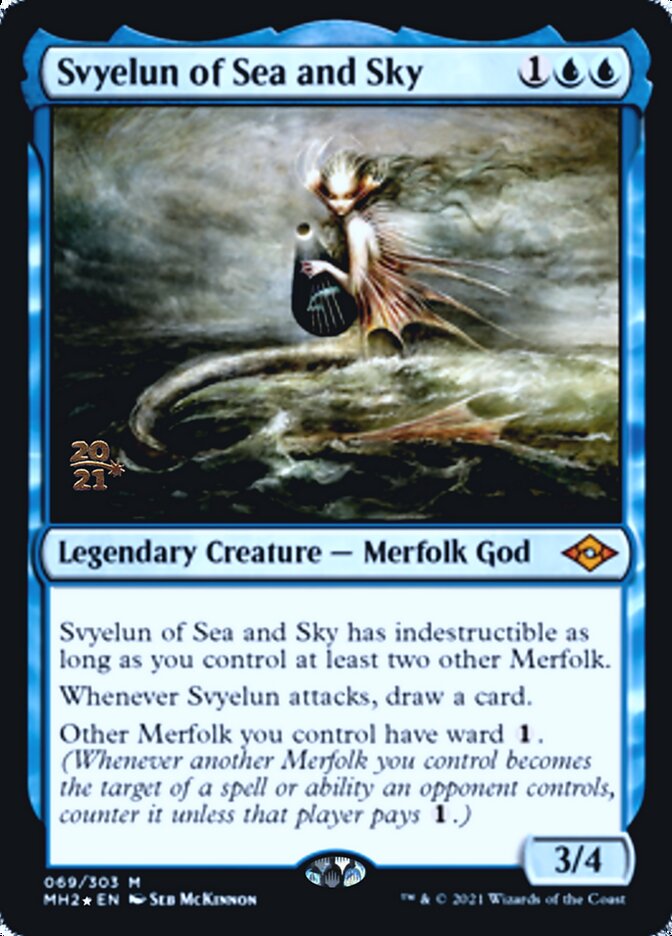
Giving all merfolk ward is pretty sweet, as is being an often-indestructible card drawer. Svyelun of Sea and Sky will be a key part of Modern merfolk if that ever happens. Until then, it’ll be a powerful part of the 99 in a Simic merfolk EDH deck.
#20. Kairi, the Swirling Sky

Is Kairi, the Swirling Sky the best blue dragon aside from reigning champ Ancient Silver Dragon? Yes, it is.
#19. Winged Boots
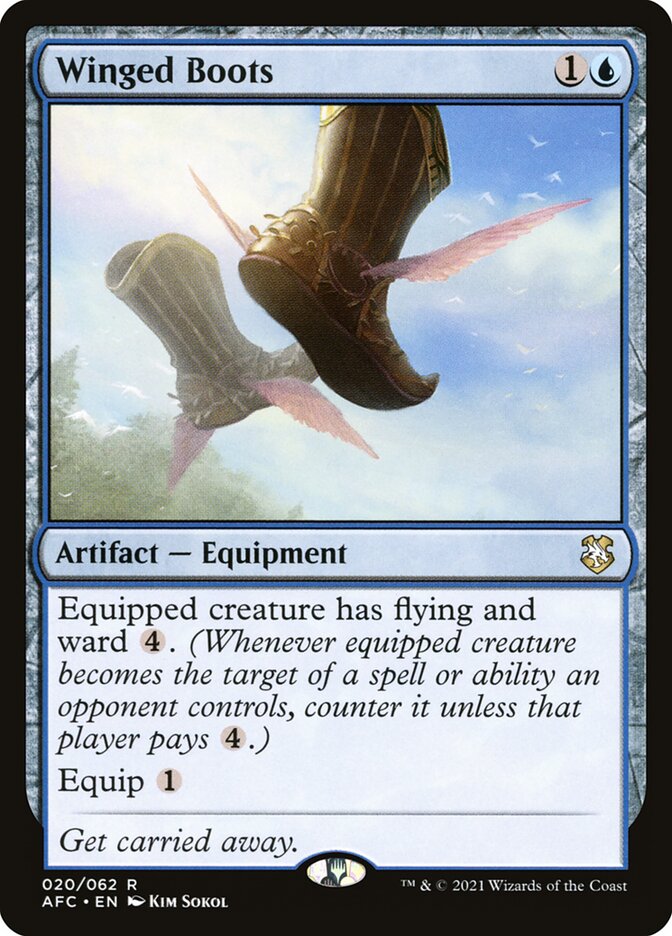
Granting ward 4 reasonably easily is really nice. And Winged Boots has to be high on any equipment deck that uses blue.
#18. Flowering of the White Tree
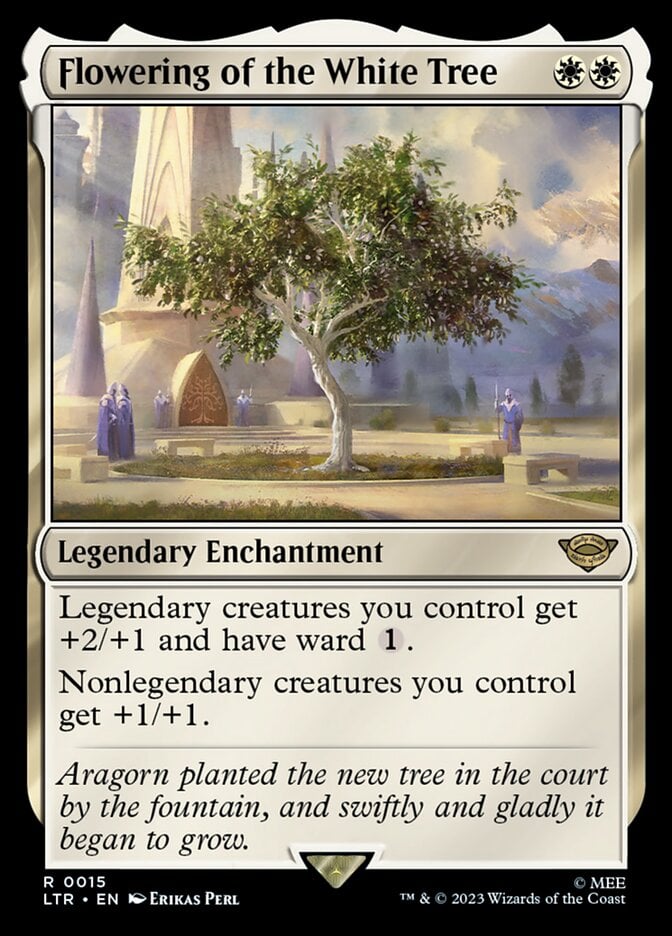
Flowering of the White Tree is the cheapest to cast Glorious Anthem we have, even ignoring the legendary text. We’ve seen a few cards now that give ward 1 to the whole team. This is the best of those cards. It’s hard to evaluate how important that is, but it can’t be nothing.
#17. Kiora, Sovereign of the Deep
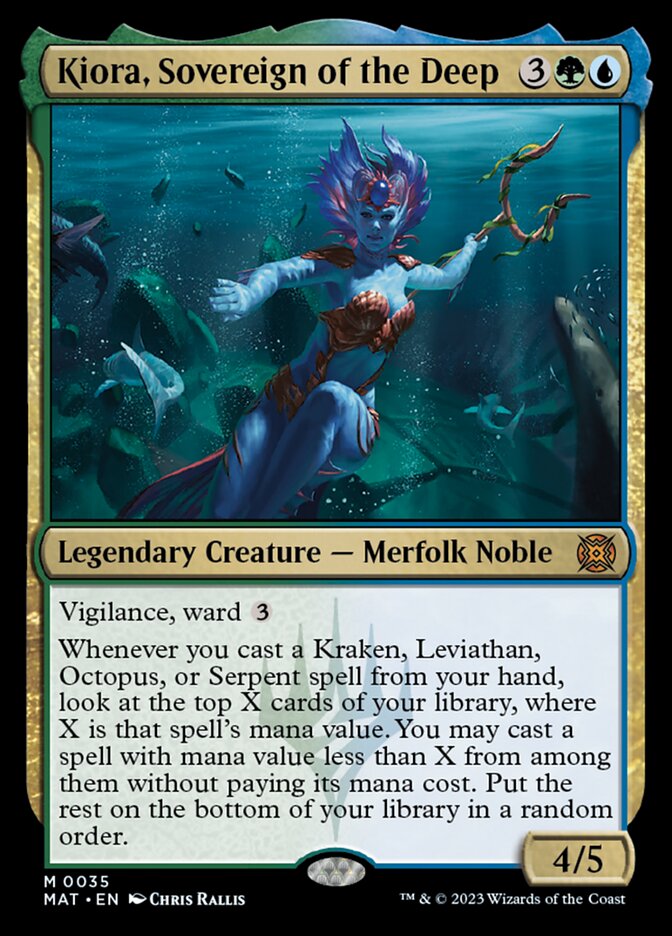
Kiora, Sovereign of the Deep is a powerful card looking for the right build, as the most popular commander for sea creatures is Runo Stromkirk, and we don’t really have a good Sultai commander yet to unite the factions.
#16. Invasion of Karsus / Refraction Elemental
Three damage wraths aren’t always the thing these days, but Invasion of Karsus flips into a spellslinger wincon Guttersnipe variant, so it can’t be discounted.
#15. Ratadrabik of Urborg
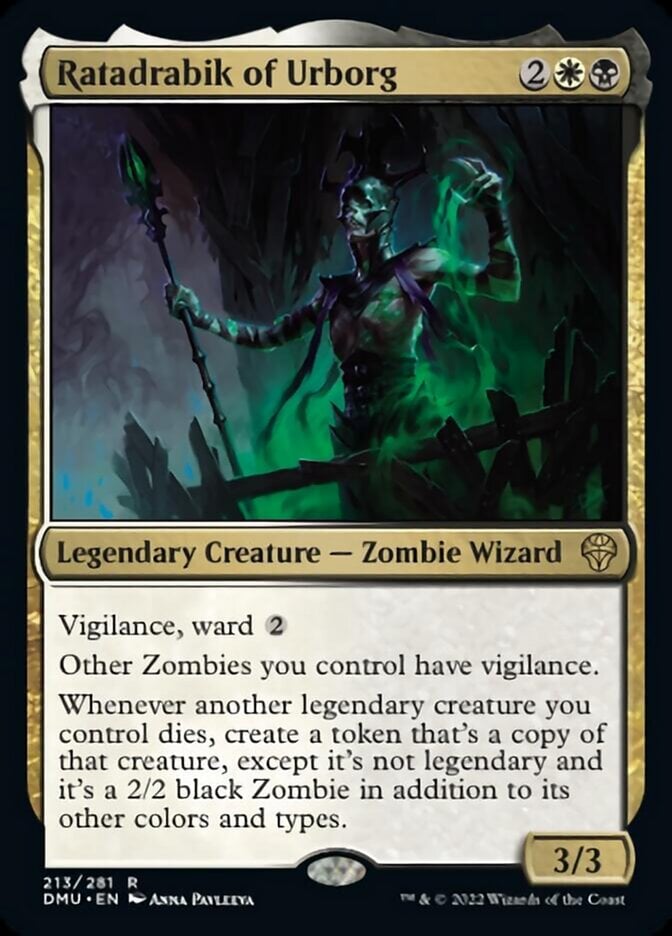
Ratadrabik of Urborg is a value player in Standard legends decks, a role it also plays in the 99 of pretty much every legends tribal deck that can run it.
#14. Invasion of New Phyrexia / Teferi Akosa of Zhalfir
The added angels in Finale of Glory are better than the ward-granting planeswalker from March of the Machine Invasion of New Phyrexia flips into, but this is still an excellent card. Teferi dishing out buffs and ward emblems is really nice.
#13. Kappa Cannoneer

In the right kind of blue affinity decks, Kappa Cannoneer regularly comes down on turns two or three. At that stage of the game, ward 4 is basically hexproof. It’ll start growing and hitting for big unblockable damage right away assuming you can keep dropping artifacts.
This is a powerful card because this easily slots into decks that already run most of the pieces it needs.
#12. Sedgemoor Witch

The Witch’s Young Pyromancer effect is super nice in black decks which want sacrifice fodder. The fact that the pests Sedgemoor Witch makes synergize with life drain and gain effects like Dina, Soul Steeper is really good.
#11. Tivit, Seller of Secrets
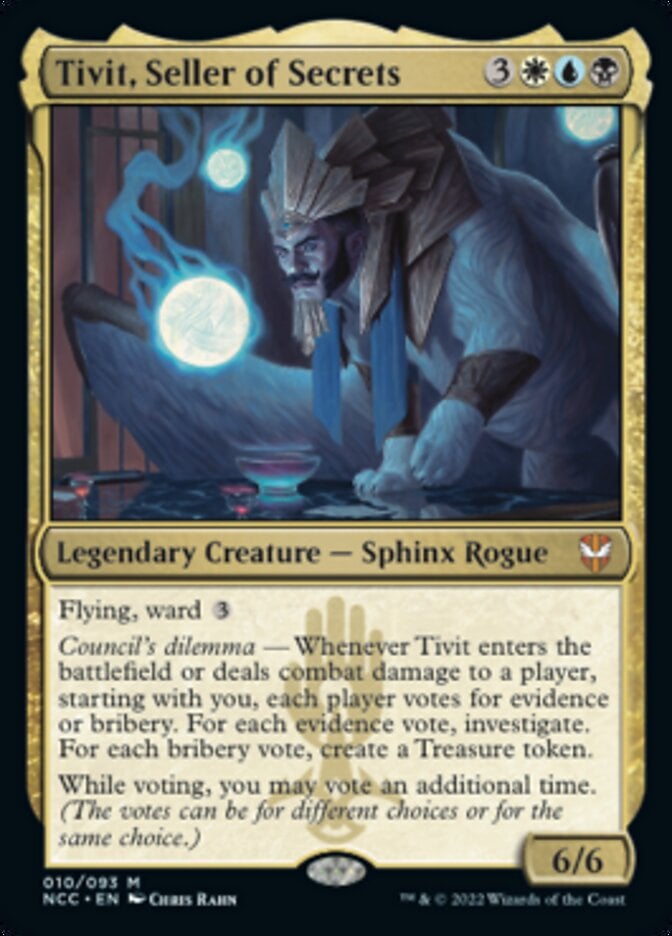
Tivit, Seller of Secrets makes a lot of artifact tokens, probably once. They all either crack for mana or draw cards. You need blink or an engine that’s rolling along with Tivit as grease to the wheels. Even adding vote adjustment cards, this feels too twitchy to me, but it can really go off.
#10. Ovika, Enigma Goliath
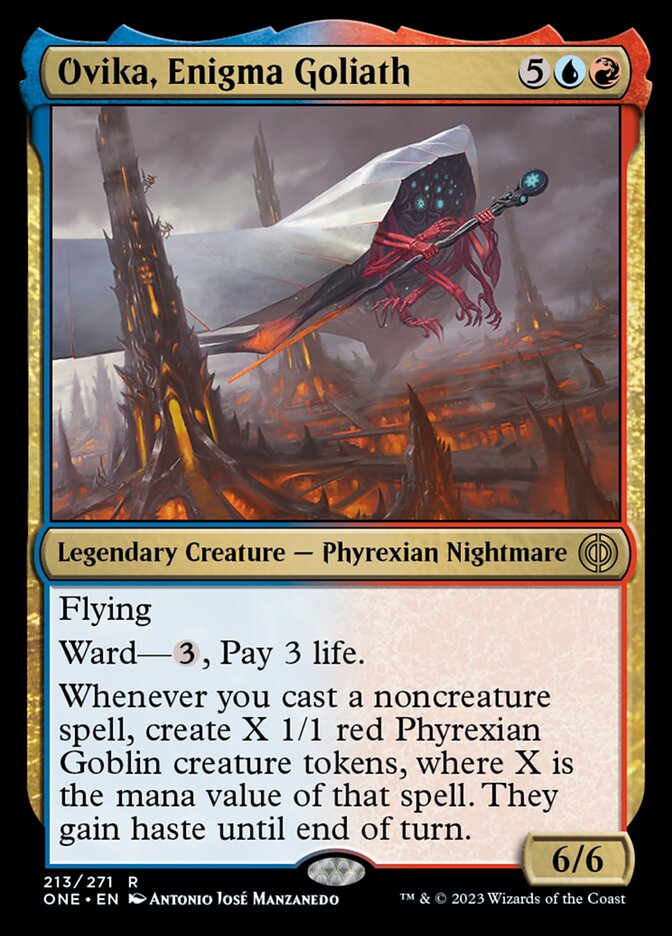
Enigma, that’s for sure! This requires some careful building. Ovika, Enigma Goliath is a powerful buildaround, but it’s also a 7-drop. It’s a giant Young Pyromancer, and there aren’t that many of those in command zones.
#9. Aboleth Spawn
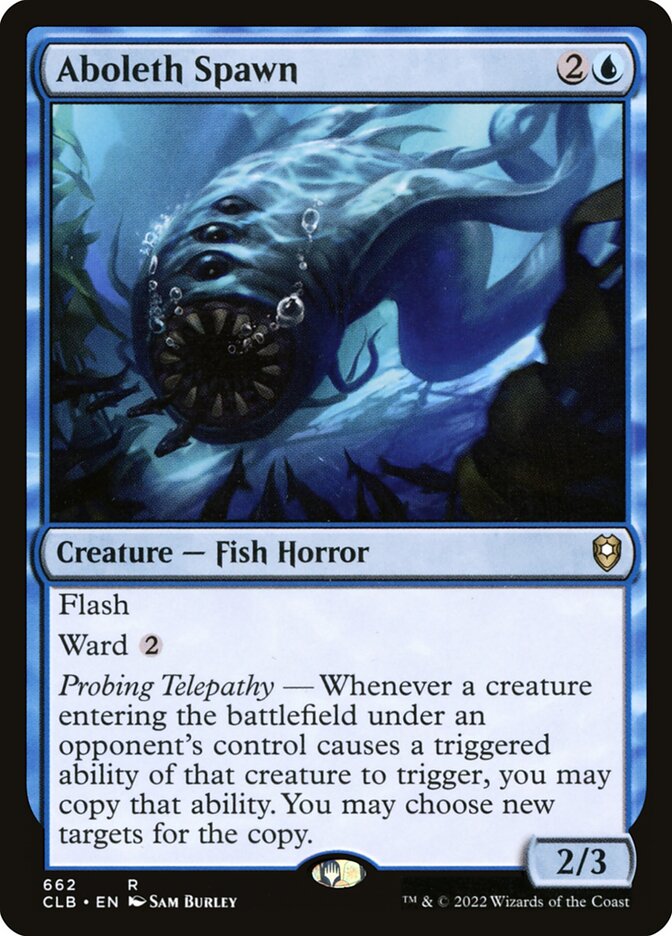
Flash out Aboleth Spawn to snap up a broken ETB like Craterhoof Behemoth or Fury and rejoice.
#8. Pippin, Guard of the Citadel
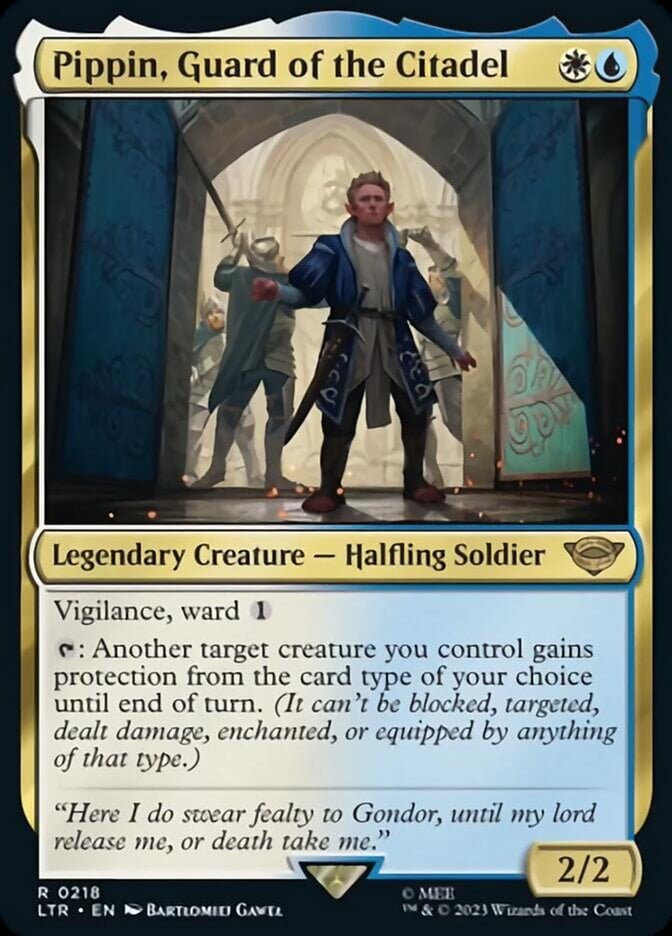
Pippin, Guard of the Citadel indeed! Need another Mother of Runes effect? Sure.
#7. Bronze Guardian
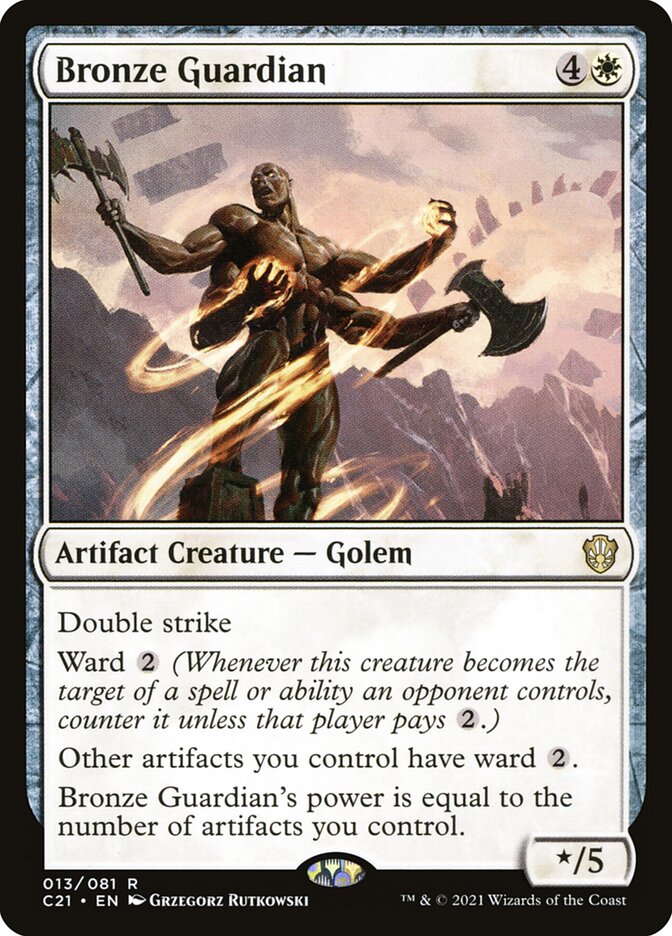
Bronze Guardian giving all artifacts ward is more useful than effects that give other tribal creatures ward, as there are less all-artifact wipes than there are creature board wipes. I usually don’t swing with this, even if its power swells, until I feel confident I won’t lose it.
That team ward is really important, especially in an artifact combo deck. Isn’t that really the only kind? The value of this card goes up the higher power the table, when you can expect more interaction.
#6. Adrix and Nev, Twincasters
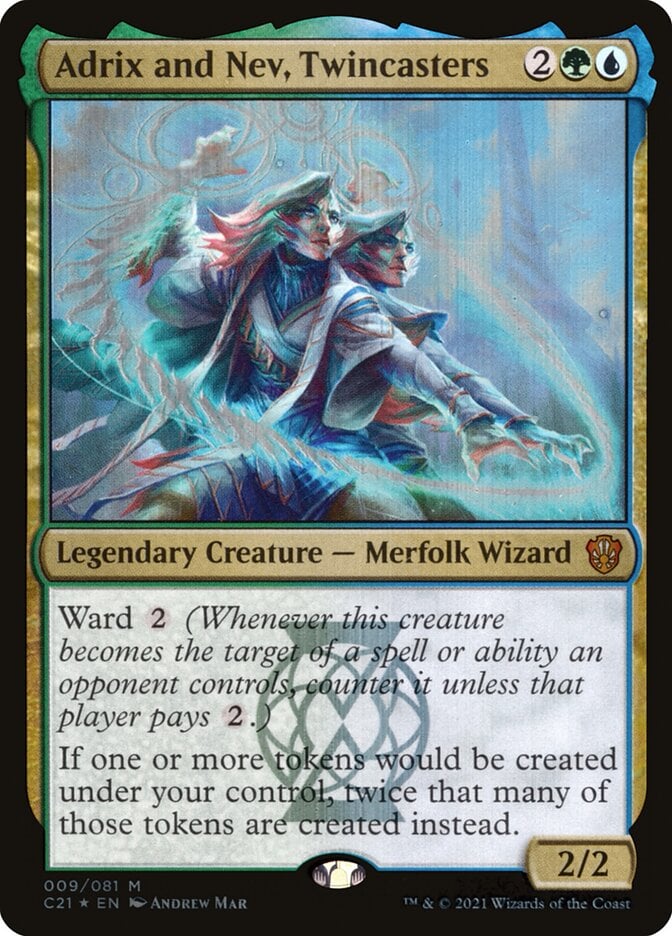
The face of one of the Strixhaven Commander precons, Doubling Season on a stick Adrix and Nev, Twincasters is far more commonly used in the 99 for Simic commanders running busted tokens builds. Which is, like, every Simic deck, right? Koma, Cosmos Serpent is especially nice.
#5. Hall of Storm Giants
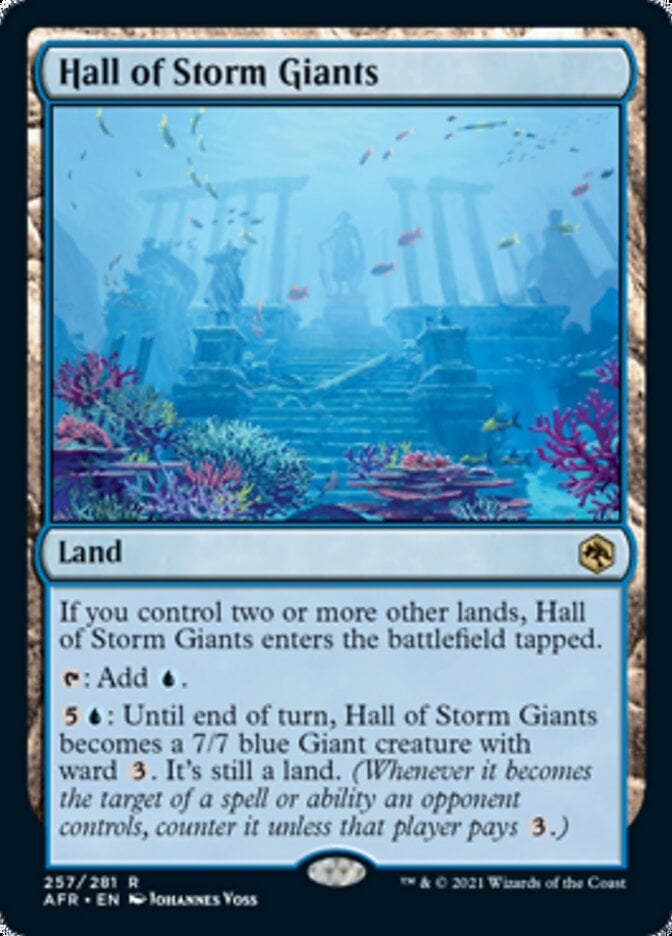
Hall of Storm Giants is one of the better living lands for EDH. It hits big enough to matter for all sorts of control shells, especially after a board wipe.
#4. Sauron, the Dark Lord

Sauron, the Dark Lord has the most pushed ward text we’ve seen, and it’ll feel like hexproof against a lot of decks. That final sentence in the text box seems just totally cracked, like the only way to beat this guy is to get eight friends and have three books’ worth of adventures.
#3. Jin-Gitaxias / The Great Synthesis
Jin-Gitaxias is super powerful, and I don’t think we’ve seen the best build of it yet as a commander. Like Keruga, the Macrosage, which has a similar ability, it’s hard to get the balance right of cheap and 3+ cost spells.
The key is probably in some kind of cost reduction space like convoke since Jin looks to the mana value.
#2. Raffine, Scheming Seer

As the final boss of the Standard Esper legends deck, Raffine, Scheming Seer just plows through a lot of your deck. It can do something similar as a commander or as just a value piece of any Esper deck.
In EDH you can pair it with all sorts of powerful cards like Archfiend of Ifnir, Bone Miser, and even Elenda and Azor. The ward 1 doesn’t matter so much in Commander, but it can still pull a gotcha.
#1. Miirym, Sentinel Wyrm

One of the best dragon commanders, Miirym, Sentinel Wyrm is just a value machine for dragon ETBs, and that makes it worth ditching the black and white from most dragons builds.
Wrap Up
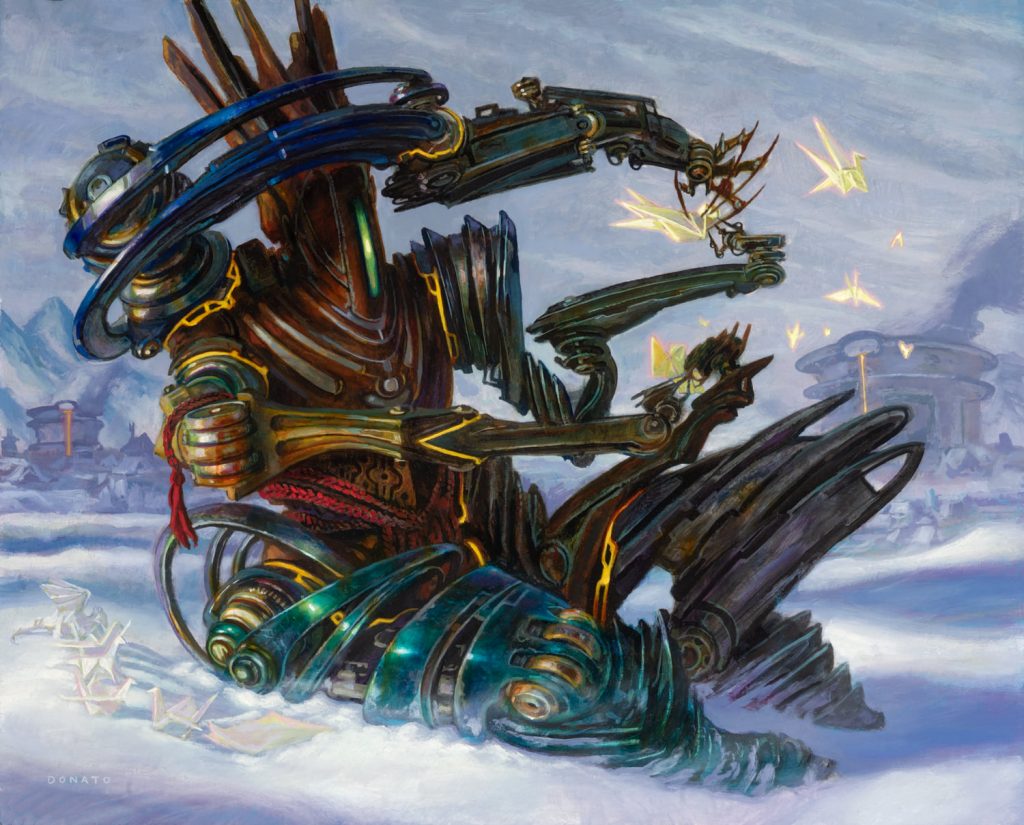
Patchwork Automaton | Illustration by Donato Giancola
Ward is still new enough that we’re still seeing Magic designers work through a lot of potential options. But since it’s scalable and can have stack interactions which hexproof and shroud can’t, I’d anticipate seeing a lot of different ideas show up in this design space. Ward X, anyone? Ward with sacrifices or mill. We haven’t seen a planeswalker with hexproof, but can that be far behind now that more removal spells also target planeswalkers?
A mechanic with a lot of creative levers to pull as a game designer or as a deckbuilder is a good mechanic. That’s why ward is such an exciting development. What’s your favorite ward card? Do you have any fun ward stories? Let me know in the comments down below. And you should definitely follow Draftsim on Twitter.
Happy deckbuilding, folks!
Follow Draftsim for awesome articles and set updates:
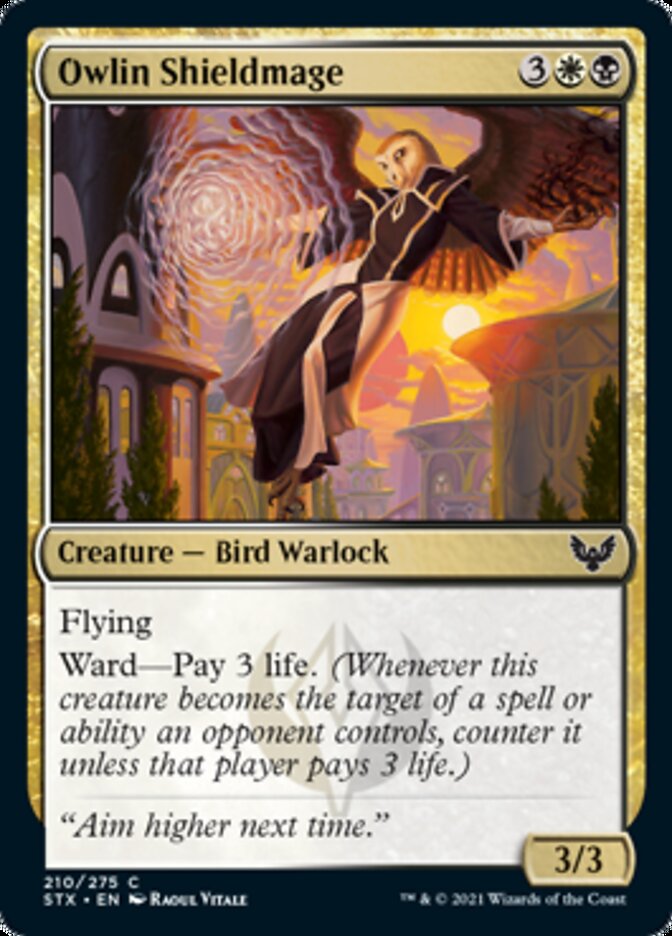
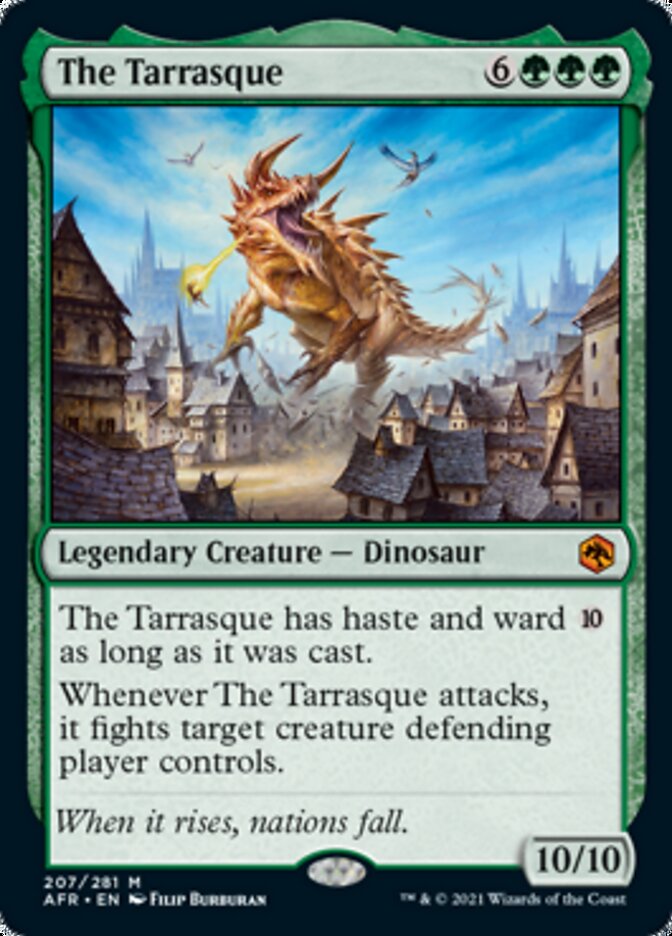
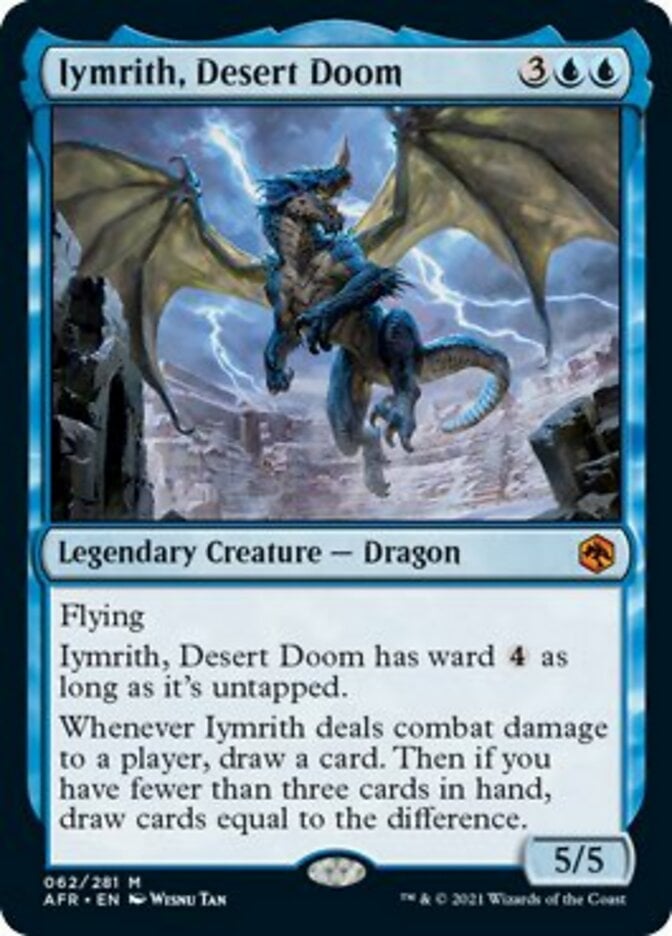
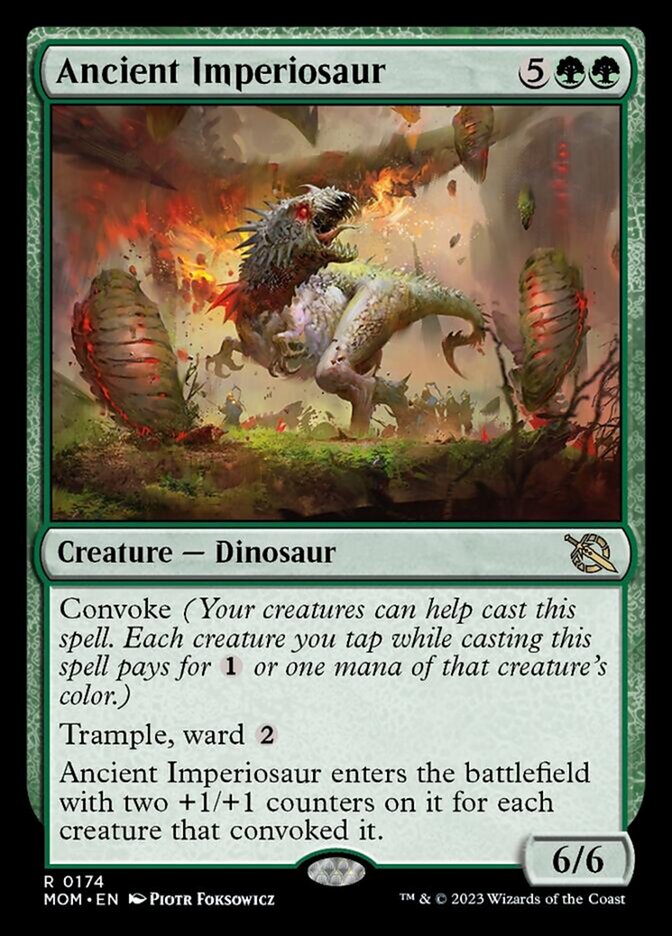
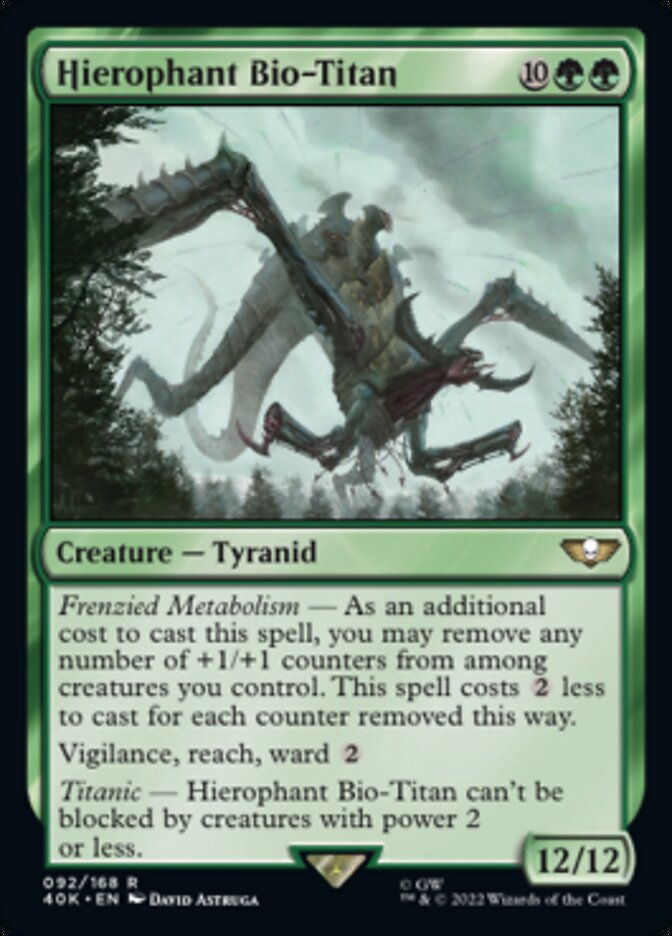
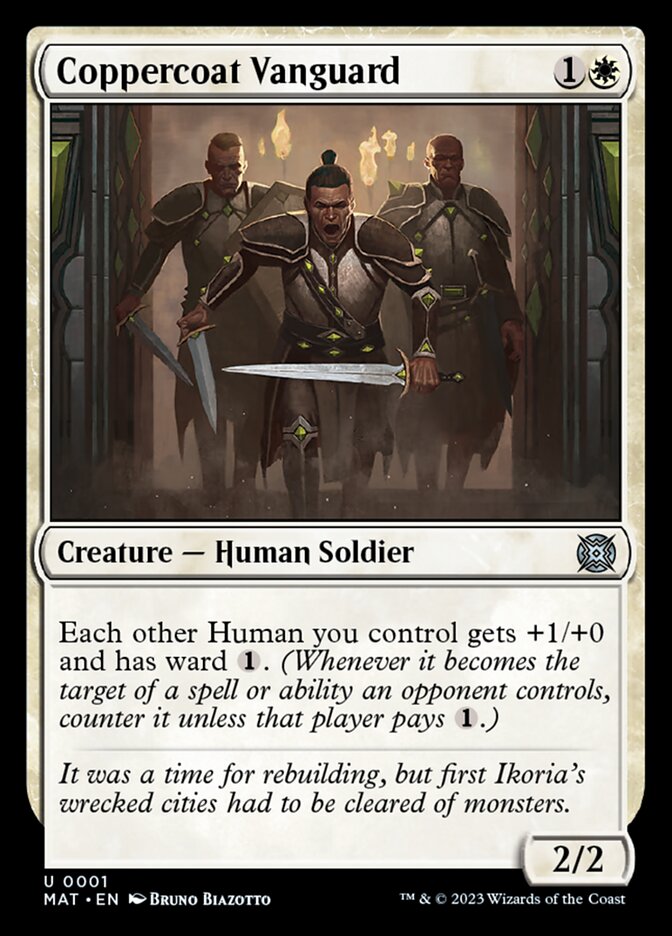

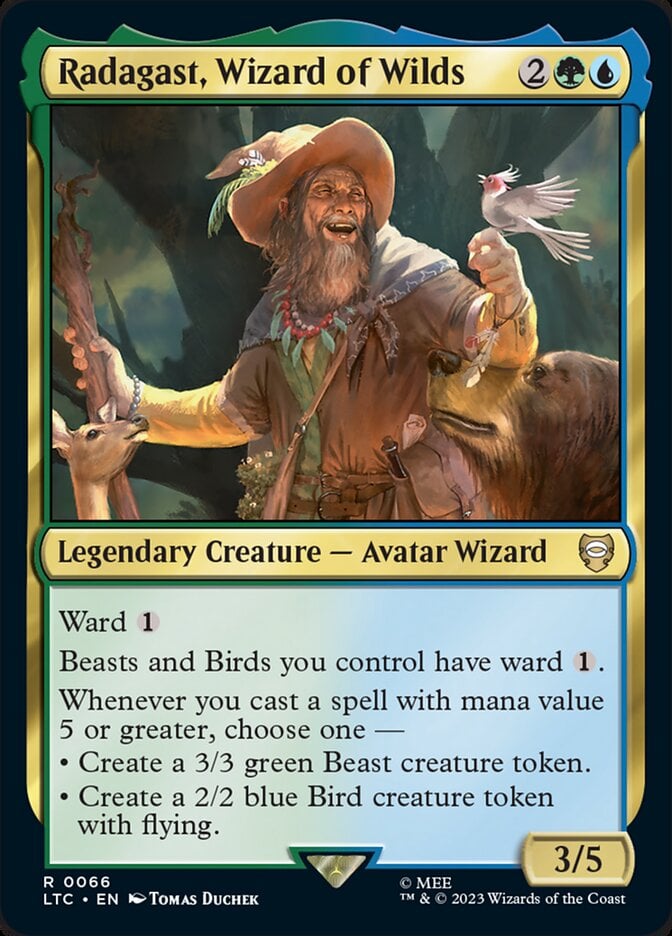

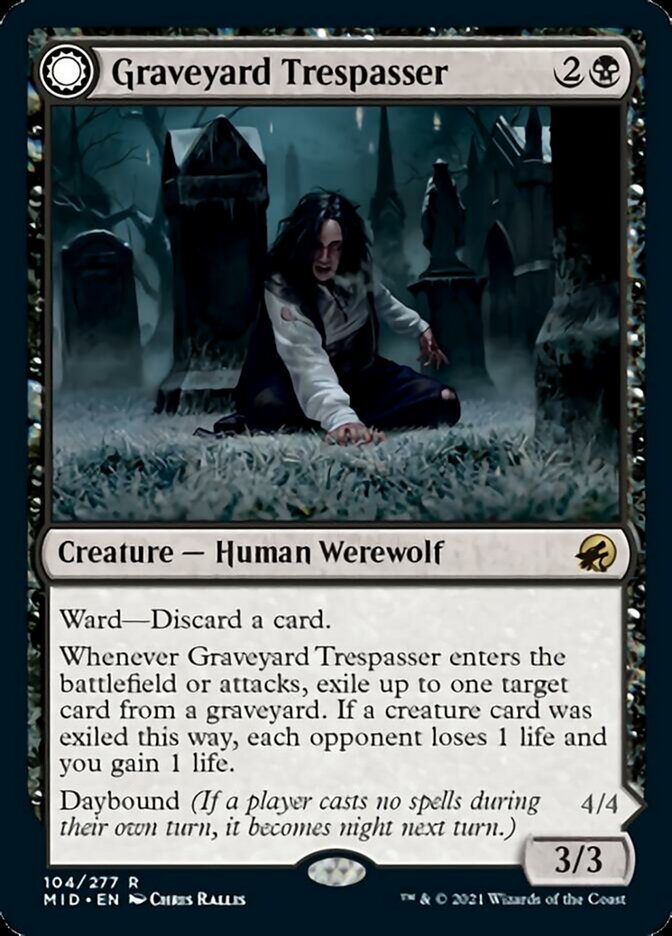

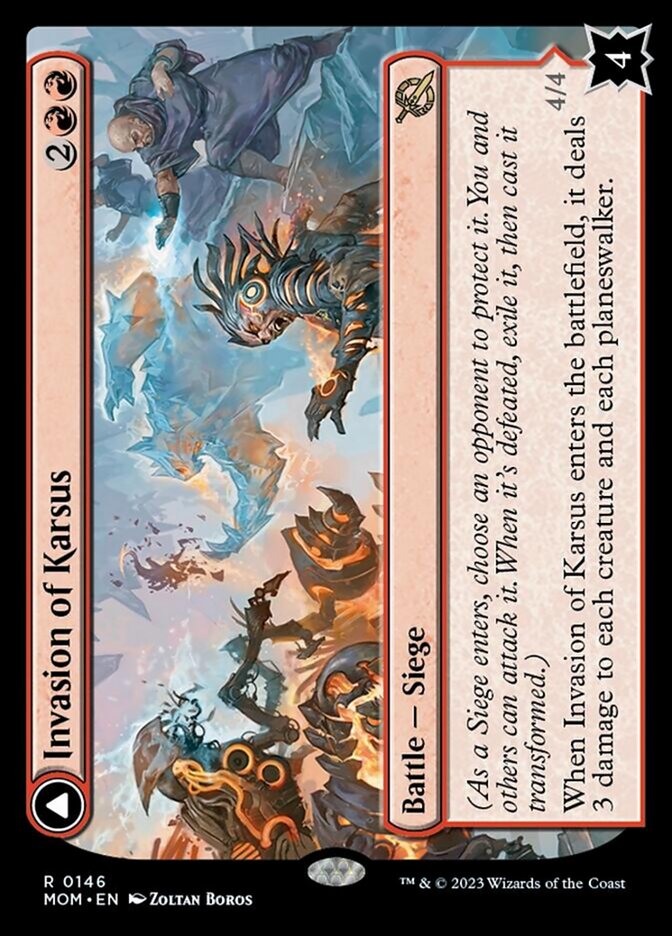


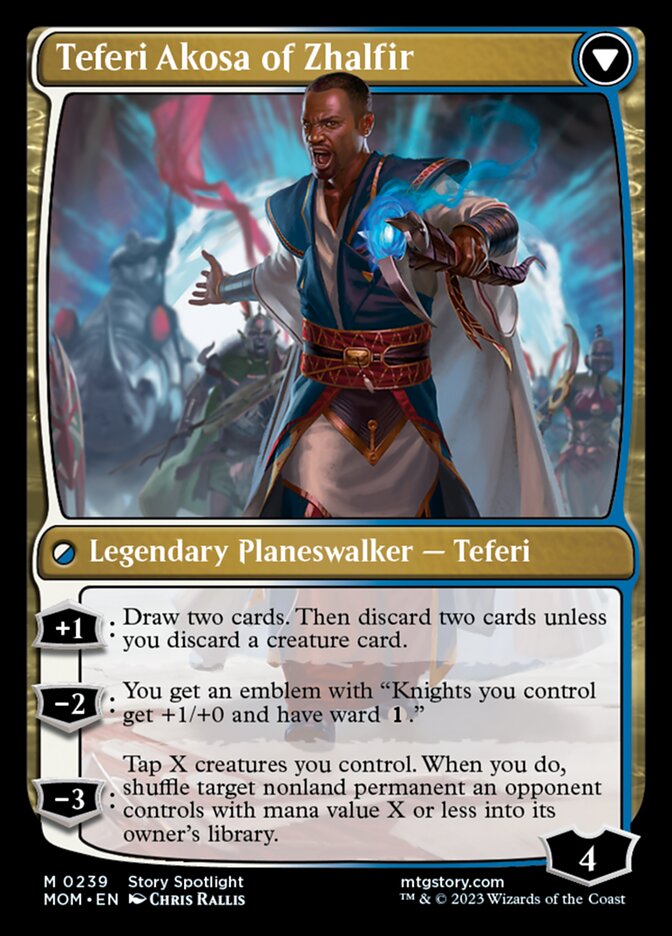
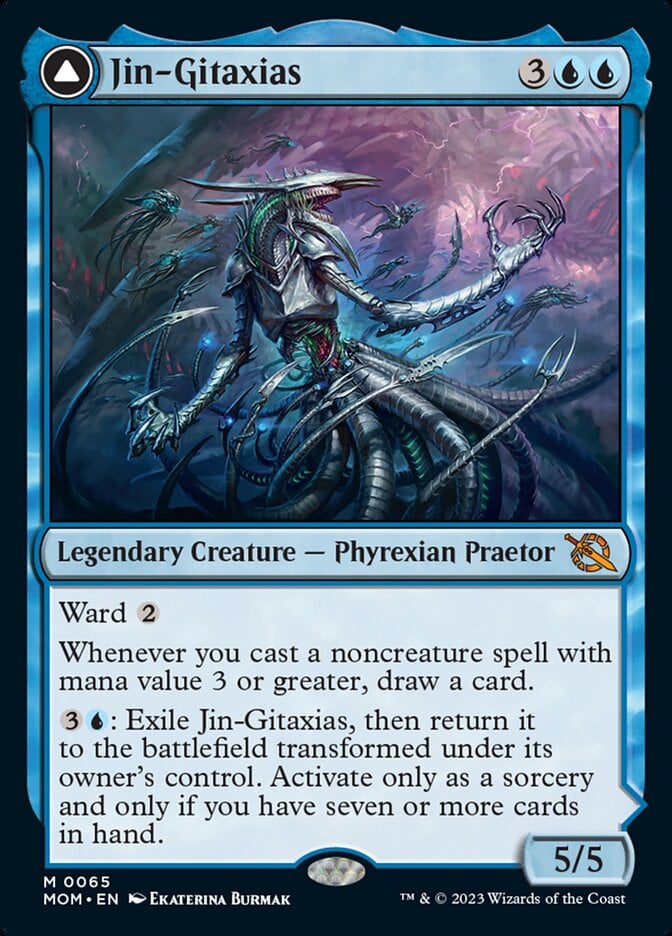


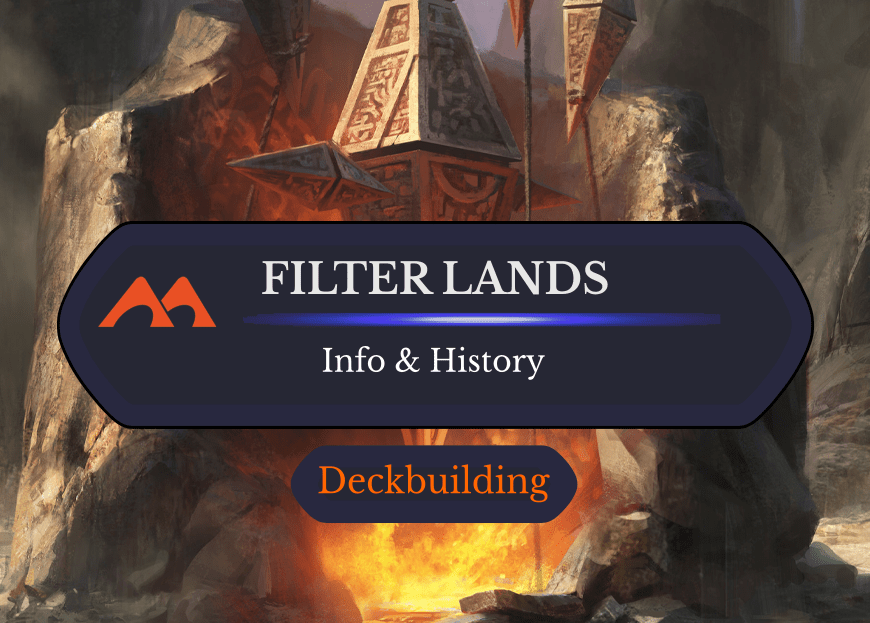
Add Comment